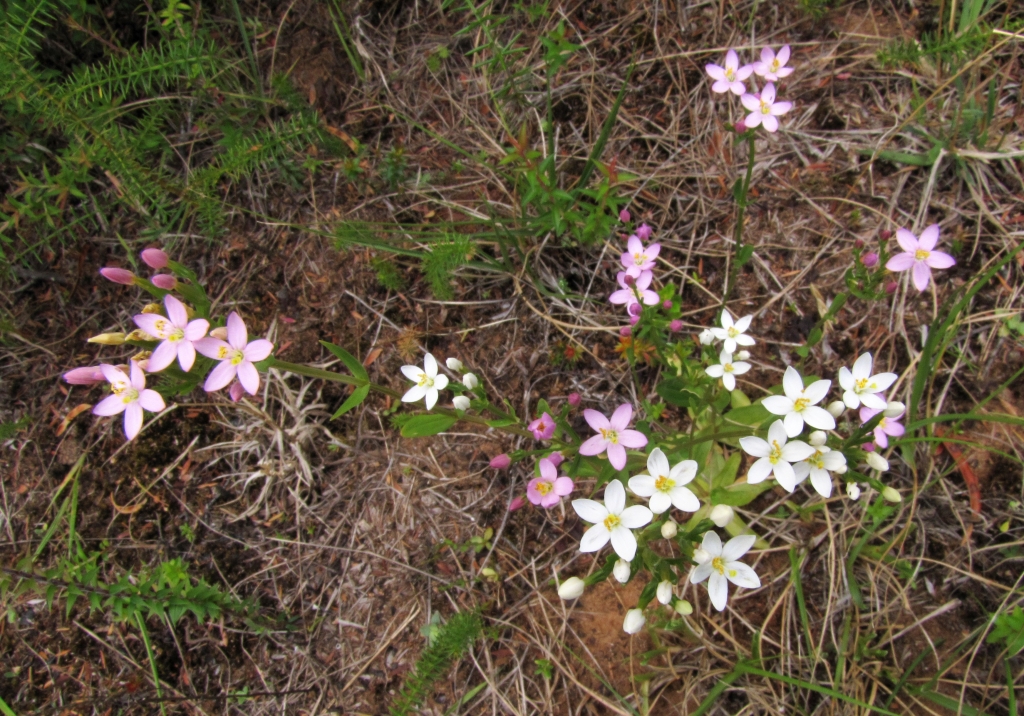Centaurium erythraea
Rafn Common CentauryErect biennial, or rarely annual, 2–50 cm high. Main stem(s) with (3–)5–9 internodes below lower-most branch. Basal leaves usually rosetted, obovate to spathulate, 10–50 mm long, 8–20 mm wide, usually obtuse; stem leaves narrower and smaller, often acute. Inflorescence typically a rather dense, corymbose dichasium. Calyx-lobes c. 4 mm long; corolla usually pale rose-pink, tube 7–8 mm long, lobes 5–6 mm long; anthers 1.6–2 mm long; ovary 6–8 mm long. Capsule c. 6–8 mm long; seeds c. 0.4 mm long, 0.3 mm wide, reticulate, reddish-brown. Flowers mostly Oct.–Feb.
LoM, MuM, Wim, GleP, Brid, VVP, VRiv, RobP, MuF, GipP, OtP, WaP, Gold, CVU, GGr, DunT, NIS, EGL, EGU, WPro, HSF, HNF, OtR, Strz, MonT, HFE, VAlp. Naturalized all States except NT. Native to Europe and western Asia. Except for the far north, north-west and heavy soils of the volcanic plain, a common and widespread weed of gardens, roadsides and bushland near cities and towns.
Native to Europe and western Asia.
When occurring with Centaurium tenuiflorum, plants of intermediate morphology (and probably of hybrid origin) are sometimes encountered.
Walsh, N.G. (1999). Gentianaceae. In: Walsh, N.G.; Entwisle, T.J., Flora of Victoria Vol. 4, Cornaceae to Asteraceae, pp. 310–321. Inkata Press, Melbourne.
 Spinning
Spinning




